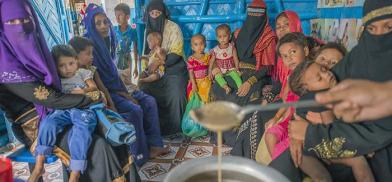EU releases €22 million for Bangladesh and Myanmar in humanitarian aid for Rohingya refugees
For Bangladesh, the challenges are only growing amid the resource crunch, a growing rate of crimes, and drug smuggling in the refugee camps.

The EU Commission has announced releasing an additional €22 million in humanitarian aid to ensure life-saving support for Rohingya refugees and host communities in Bangladesh and Myanmar. This comes amid soaring humanitarian needs for displaced and affected Rohingya refugees.
The statement released by the EU said that the funding will address immediate needs, including protection services, food assistance, nutrition, health, and shelter.
Over 700,000 people from Myanmar’s Rohingya ethnic fled to neighboring Bangladesh in 2017 after the Myanmar military launched a brutal crackdown.
Most refugees, whose numbers have now swelled to over a million, live in the most challenging conditions in congested camps in Bangladesh’s Cox Bazaar.
Janez Lenarčič, EU’s commissioner for crisis management, said: "The Rohingya crisis has reached unprecedented proportions and sustained international solidarity is essential to tackle the enduring humanitarian needs.”
“The EU's new aid package underlines our commitment to the most vulnerable refugees and their host communities in Bangladesh, as well as the conflict-affected population in Myanmar," he added.
So far in 2022, EU humanitarian aid and disaster preparedness support in Bangladesh has exceeded €41 million, including the recently announced aid, with a focus on addressing the most pressing needs of Rohingyas and their host communities in the country.
Dhaka has long been pushing for the safe and dignified return of these refugees back to Myanmar. However, its plan for their repatriation suffered a blow last year when the Myanmar military seized power, scuttling the talks that Dhaka had been holding with the erstwhile civilian government.
For Bangladesh, the challenges are only growing amid the resource crunch, a growing rate of crimes, and drug smuggling in the refugee camps.
State capacity and infrastructure as well are pushed to their limits as almost the entire refugee population lives in congested camps which remain vulnerable to natural disasters like fire, floods, landslides, and cyclones.
(SAM)









Post a Comment